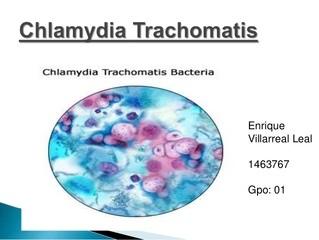
Men usually have no symptoms, but infection can cause discharge from the penis, pain and burning during urination, infection or inflammation in the ducts of testicles, and tenderness or pain in the testicles. dysuria, frequency, and mucoid to purulent discharge. Clinical syndromes associated with C. trachomatis include epididymitis, proctitis, conjunctivitis, and Reiter’s syndrome. In women, C. trachomatis may produce no specific symptoms too, at least until the next menstrual period. The most common symptoms are mucopurulent discharge and fragility. Some women develop salpingitis, endometritis, pelvic inflammatory disease (PID), acute urethral syndrome, bartholinitis, cervicitis, cervical dysplasia, conjunctivitis, perihepatitis, and arthritis. ectopic pregnancy and tubal factor infertility. It is associated with an increased risk for the transmission or acquisition of HIV and is also attributed to be a risk factor for the development of cervical carcinoma.
usually occurs at birth. Trachoma is usually transmitted through autoinoculation by the
hands from genitalia to the eyes.
Incubation period:
• Adult genital infection: 7-21 days.
• Conjunctivitis in infants: 5-17 days after delivery.
• Infant pneumonitis: 3-16 weeks of age.
• Lymphogranuloma venereum: 7-12 days, but may be as long as 1-12 weeks
after exposure.
